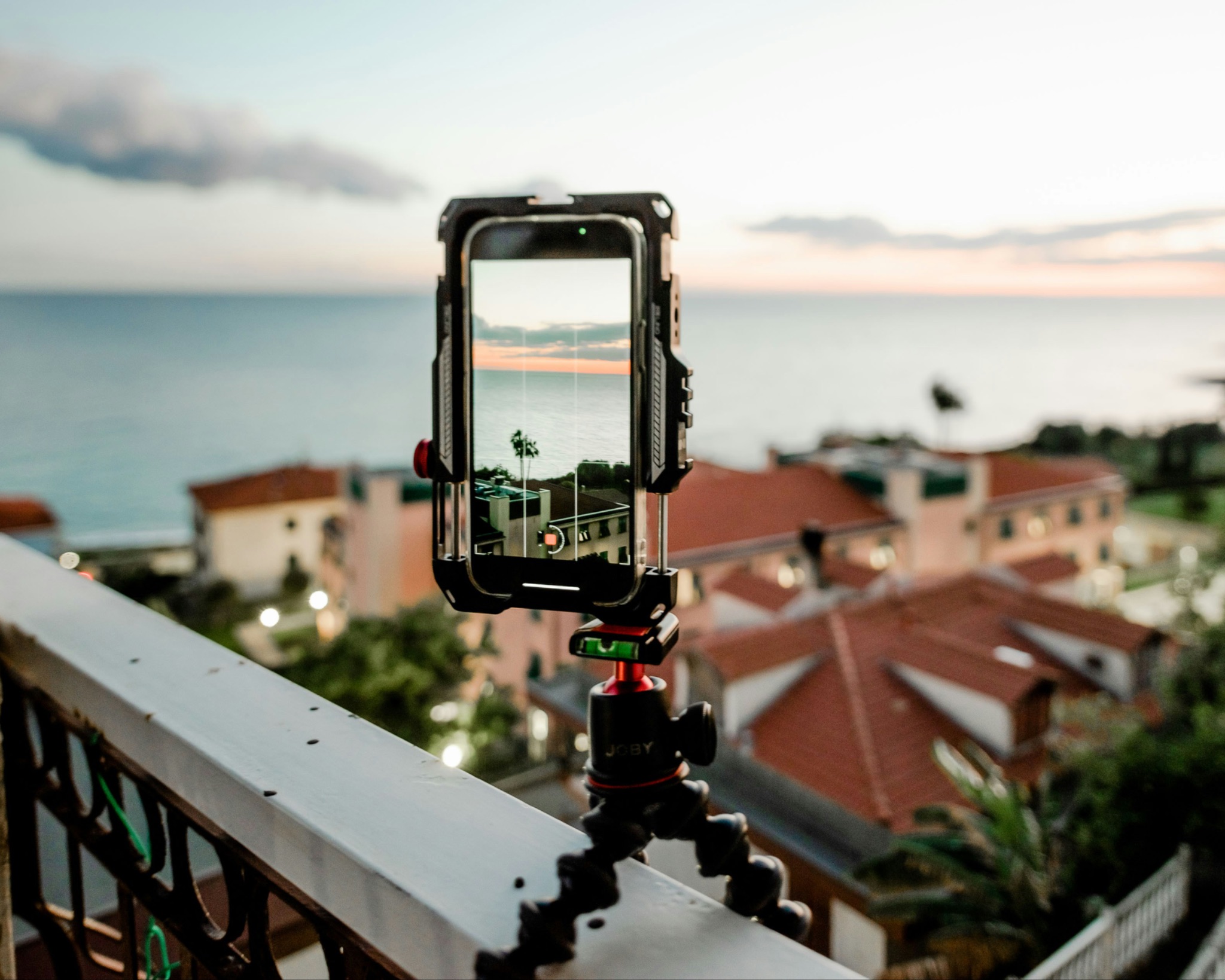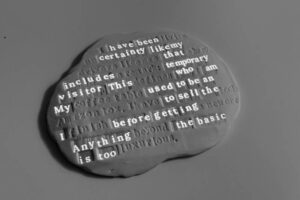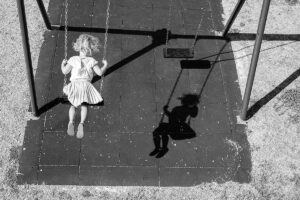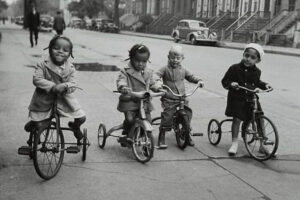![]()
Earlier this year, my father passed away and left me with his beloved Nikon F and Photomic FTn. After getting it repaired, I found myself in love with the analog process again and have been revisiting cameras I had long since dismissed. Suddenly, I was confronted with Nikon cameras I had never seen or — in some cases — never heard of before.
While I have been covering cameras and camera technology for more than a decade, my knowledge of the film era is extremely poor. By the time I started working in the industry, film had long since been replaced by digital. But recent conversations with PetaPixel‘s Chris Niccolls put a huge list of classic cameras on my radar. They are certainly not new — but they’re new to me.
During a recent trip to Tokyo, I decided to dedicate a few days to scouring some of the city’s excellent new and used camera shops to see if I could lay my eyes (and perhaps my hands) on some of these classic Nikon cameras whose designs I find gorgeous.
Nikon Photomic FTn
I do want to start with the Photomic FTn because, while I didn’t have to come to Tokyo to find one since my dad left me his, I do want to point out that I absolutely adore this design. It’s a big, beefy, somewhat heavy camera that is wonderful both because of its simplicity as well as its timeless capability. Nikon debuted the F Photomic FTn in 1968 which fit onto only later models of the Nikon F as well as bodies that were paired with it. I point this out only because I actually have a second Nikon F that is an earlier model and the Photomic light meter doesn’t fit on it.
![]()
I like the Nikon F a lot, but the Photomic light meter makes shooting with the camera so much nicer, faster, and more enjoyable. While I got the camera fully refurbished and repaired by KEH several months ago, my colleague Chris Niccolls and I only got it working and tuned to modern batteries while we were in Japan.
Despite visiting multiple camera shops in Tokyo, I didn’t see a Photomic FTn other than my own until we took a tour through the new Nikon Museum. There, this lovely camera enjoyed some prime positioning among Nikon’s long list of excellent film cameras.
Nikon FM
In 1977, Nikon released the FM and continued to produce the camera until 1982. I think of it as the logical extension of what the Nikon F and Photomic FTn started and what was continued with the Photomic F2. What resulted was still a fully mechanical body but with an integrated light meter, creating a camera that is about as light and easy to use as the original F but with the usability benefits of the FTn.
Because it’s a younger camera body, finding a Nikon FM in Tokyo is pretty easy. We came across an all-black model (which you can see at the top of this story) at Five Star Camera in Shinjuku and it was in fantastic condition. If I didn’t already have my hands full enjoying my Photomic FTn, I would have snapped up that FM in a heartbeat since it was only about $150.
Nikon S2
My knowledge of classic cameras is admittedly lacking and so at the beginning of our multi-day camera hunting adventure, there were some cameras I didn’t know existed. The Nikon S2 is one such camera and I immediately lusted after it. So while I didn’t come to Tokyo looking for this camera, it shot its way up my favorites list as soon as I knew it existed. We saw it for the first time at the 2nd Base camera shop in Akihabara but I held one for the first time at Five Star.
![]()
If you are a listener of The PetaPixel Podcast, you’ll know that I’m a fan of rangefinder cameras and recently picked up a Voigtlander Bessa R2A. Well, the Nikon S2 scratches a similar itch but the design and feel is just an entirely different animal than modern Leica rangefinders or the Bessa. There is something special about the steam-punk-like knobs, dials, and buttons. I especially like the focusing mechanism that’s just an exposed gear.
Nikon has an S2 in the “touch and try” area of its museum, too, if you want an easy way to feel one for yourself. I certainly took advantage of that opportunity.
Nikon 35Ti
Chris Niccolls first put this camera on my radar about a month before we left for Japan because it remains one of his favorite Nikon designs — and for good reason.
![]()
I will go out on a limb and say this might be the slickest design of any camera — it certainly is unique. I described the S2’s buttons and dials as “steam-punk-like” but the 35Ti takes that to the next level. I’ve never seen a camera’s settings displayed like pressure gauges and I’m not sure why no one else has done it. It’s just so good.
![]()
Again, Five Star Camera had one of these gorgeous cameras but they don’t come cheap: a mint-condition one was more than $1,000. However, just like with the Nikon S2, the Nikon museum has a 35Ti out in the “touch and try” area of the museum so you can get some extended time with one of the coolest-looking cameras ever made.
Nikonos RS
Underwater cameras are always neat looking and the Nikonos RS, available between 1992 and 1996, is no exception. This thing looks like a cross between a submarine and an SLR because it, ostensibly, is.
These days, underwater cameras are either fully sealed single units or they use a separate underwater housing. Nikon’s Nikonos RS is from a bygone age when the company just mashed these two ideas together into a glorious tank of a camera.
![]()
Look, I am not saying the Nikonos RS is a pretty camera — it’s definitely not — but the fact it was an interchangeable lens underwater camera and lens system makes it special. What a lovably ugly piece of history. I managed to sneak a glance at one behind the glass at Five Star Camera, so they are still out there if you are looking to add one to your collection.
Nikon D750
I skipped ahead a few decades because the next camera I have always loved is the Nikon D750. I have a lot of fond memories of this camera because it was one of the top choices among wedding photographers back when I was working in the industry. It was sometimes a photographer’s main body, but most of the time it was backing up a D850 and there it performed admirably. Hardy, reliable, and affordable, the D750 used a design that just screamed “Nikon” whether or not you could see the logo.
![]()
This camera is so reliable and has been such a workhorse for so many, I know quite a few photographers who still swear by theirs today. The D750 has been officially discontinued now, joining the cameras I’ve talked about so far in the halls of Nikon’s museum. But the legacy lives on and you can certainly get one if you want to. We found a whole line of them at Map Camera in Shinjuku.
Looking Forward for a Moment…
I have been on a bit of an impractical streak lately — shooting with film is purely about fun and enjoying the hobby, but it’s very expensive. Every camera I’ve talked about thus far, minus the D750, wouldn’t be useful for much in today’s professional photography scene. Sure, you can use film to augment what you’re doing but digital is simply better and more practical.
While browsing the aisles of these camera shops, I found myself thinking about what I would do if I were looking to buy a new Nikon camera today. I was really impressed with the Z8, so I would very likely get one of those, but it would be irresponsible to just have one professional body — you’ve gotta have a backup. For that, I think I would go with the Z6 III. My work is very often a mix of photo and video and I really enjoyed the video capture experience of the Z6 III when I was helping Jordan Drake shoot our Portland-based hands-on video earlier this year.
There are plenty of reasons to pick basically any mid- to high-end camera from Canon, Sony, Fujifilm, Panasonic, or Nikon these days, and everyone is allowed to have a favorite. For me in 2024, it’s Nikon.
If you ever find yourself in Tokyo, take a day to visit the many excellent camera stores in the city (both those I mentioned and the many others). Go find your favorite series of cameras and enjoy looking back at the history of these capture devices. It really makes using the camera you have in your bag today feel more meaningful.









 English (US) ·
English (US) ·